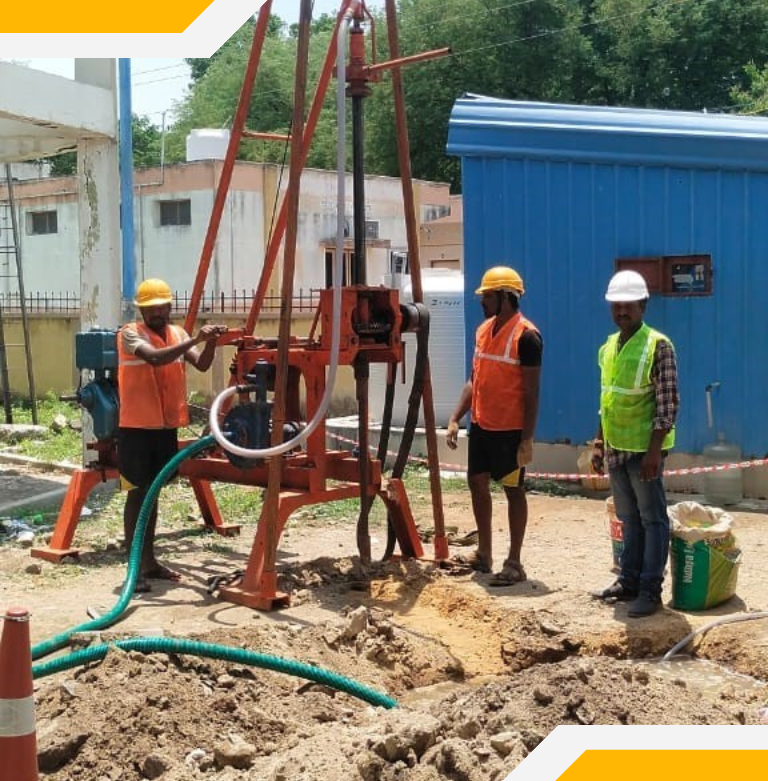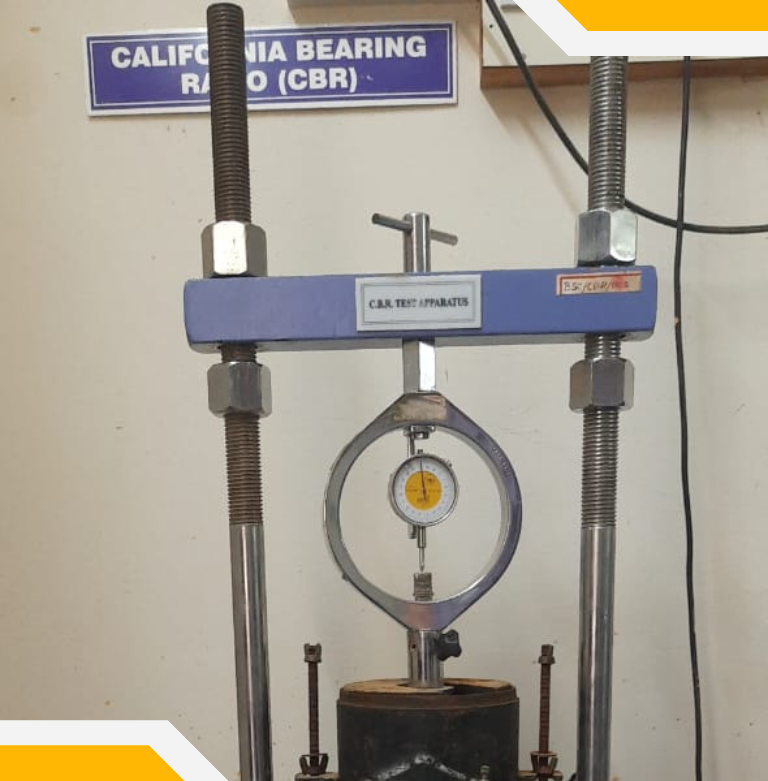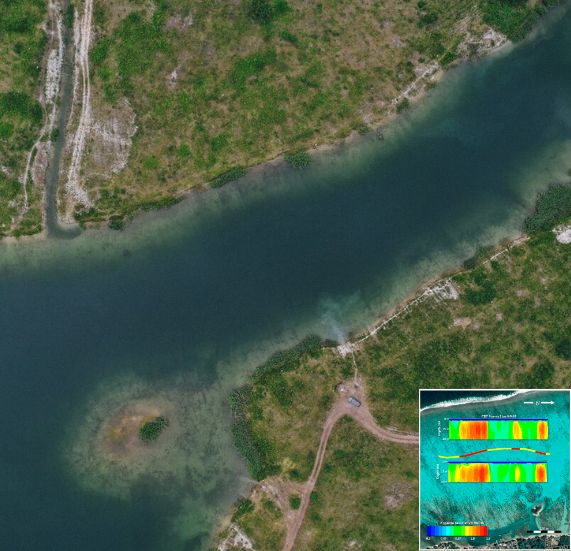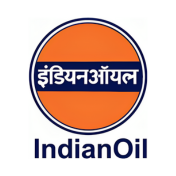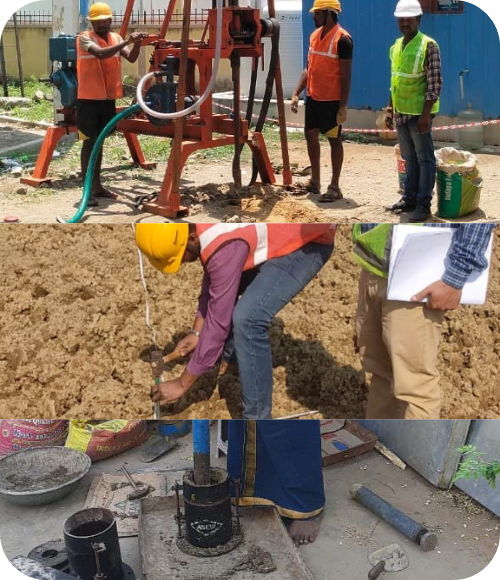
 Geotechnical Survey
Geotechnical Survey
Exploring Ground Realities with BSC
A geotechnical survey involves assessing soil and rock properties at a construction site to understand subsurface conditions.
- Standard Penetration Test (SPT)
- Electrical Resistivity Test (ERT)
- California Bearing Ratio (CBR)
It helps engineers make informed decisions regarding foundation design and construction methods.
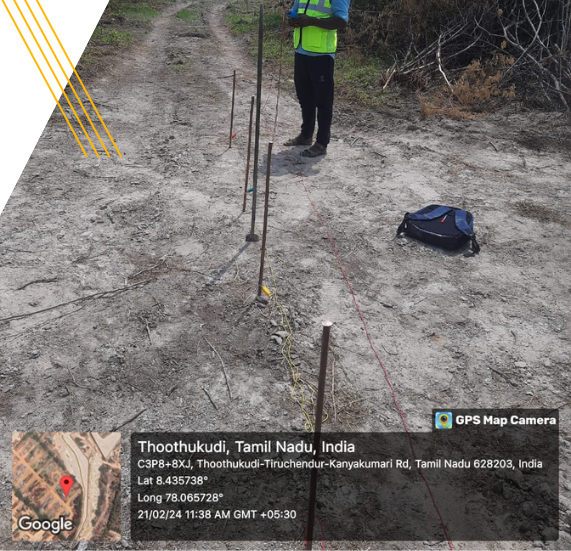
Electrical
Resistivity Test
Assess soil's electrical resistivity for effective subsurface imaging, foundation design, and soil characterization. Gain insights into soil composition and moisture content for optimized construction practices.
Benefits of Electrical Resistivity Test
- Subsurface Imaging
- Foundation Design
- Soil Characterization
Have any upcoming projects?
 Concrete Mix Design
Concrete Mix Design
Concrete Mix Design Testing
The objective of mix design is to decide the proportions of materials which will produce concrete of required properties (Strength, Workability, Durability) and to arrive at the best proportionate of ingredients (Cement, Fine Aggregate, Coarse Aggregate, Chemical Admixture, Mineral Admixture and water) in an Economical approach.
Benefits of concrete mix design testing:
- Cost Efficiency
- Reduced Wastage
- Consistency Control
- Optimal Mix for Performance


 Water
Water
Water Testing
Comprehensive testing services for water in construction, evaluating quality, purity, chemical composition, contamination levels, and compliance with regulatory standards for safe and reliable construction practices.
Tests for drinking water and construction water:
- Physical properties
- Chemical properties
Got any upcoming solar plant projects? Let us Handle it!

Pull Out Test
The pull out test in pile load testing evaluates the bond strength between the pile and surrounding soil, ensuring reliable pile performance and load transfer.
Benefits of Pull Out Test
- Bond Strength Assessment
- Quality Control
- Design Validation
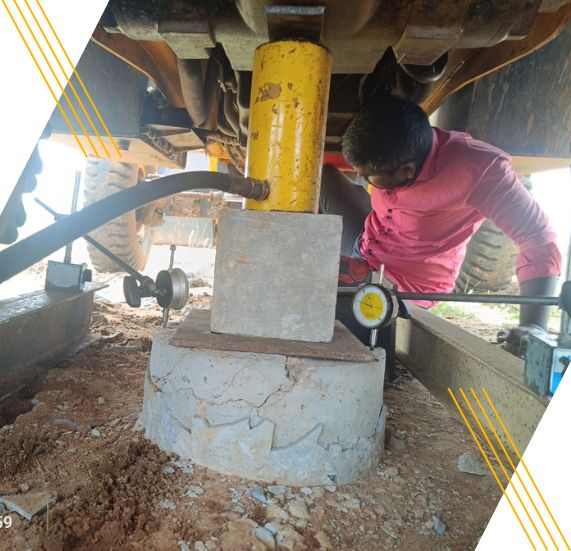
Vertical Load Test
The vertical load test in pile load testing evaluates the load-bearing capacity and settlement characteristics of piles under vertical loads, ensuring reliable foundation performance.
Benefits of Vertical Load Test
- Load Capacity Verification
- Settlement Analysis
- Design Validation
Have any upcoming projects?

Contour Survey
A contour survey maps the terrain's elevation and features to understand its topography, guiding land development, engineering projects, and environmental assessments.
Benefits of Contour Survey
- Topographic Mapping
- Site Design Optimization
- Erosion Control
 Testimonials
Testimonials
Our clients reviews.
 Having Questions
Having Questions
FAQ's
 Need more details?
Need more details?

